The method outlined in this post can be used to create a rye sourdough starter completely from scratch by mixing a portion of rye flour and water for 6-10 days.
This method can also be used to convert an existing mature starter (created with all-purpose, bread, or whole wheat flour) to a sourdough rye starter. This is what I did.
I had been using my Apple Starter exclusively for several months and hadn’t even fed my other two starters. As you can imagine, they were begging for attention.
One of my starters, the BBA Starter, was a mature starter that I created in 2009 while participating in the BBA Challenge; however, it wasn’t active at the moment.
Instead of bringing my BBA starter back to life as an all-purpose starter, I decided to convert it to a sourdough rye starter. The BBA Starter was originally created with a portion of rye flour so it seemed like a natural progression to convert it to a sourdough rye.
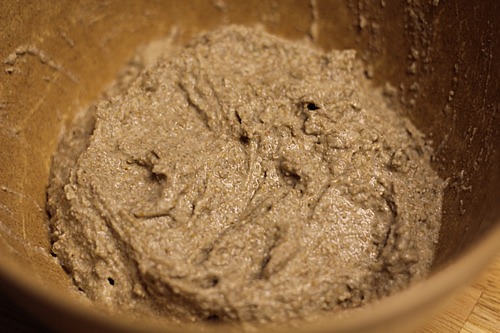
*Note regarding discarding excess sourdough starter. If you’re like me and you don’t like waste, place your discarded sourdough in a container in the refrigerator and use it to make crackers (https://www.breadexperience.com/got-sourdough-make-crackers)
Developing a Sourdough Rye culture
Adapted from Bread: A Baker’s Book of Techniques and Recipes by Jeffrey Hamelman
Day 1: Initial Mix
To make a rye starter from scratch
In a bowl or container, mix:
- 450 grams / 6.4 oz / 1 3/4 cups whole rye flour
- 450 grams / 6.4 oz / 3/4 cup of water
Mix the ingredients to a smooth paste, cover with plastic wrap or bees wrap, and let the mixture stand in a warm place (75 to 80 degrees F.) for 24 hours.
To convert an existing mature starter (made with all-purpose, bread, or whole wheat flour), begin the process with the Day 2 feeding.
Day 2: Perform One Feeding
To continue building your starter from scratch, take 3.2 oz of the mixture from Day 1 and follow the remaining directions below.
To convert your existing sourdough to a rye sourdough, take 3.2 oz of your mature starter and follow the rest of the instructions below.
Take 3.2 oz of starter mixture and add:
- 3.2 oz (7/8 cup) whole rye flour
- 3.2 oz (3/8 cup) filtered (non-chlorinated water)
Mix the ingredients until they form a smooth paste.
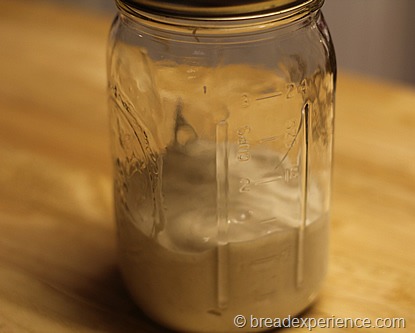
Cover the bowl or container with plastic wrap or bees wrap, and let it stand in a warm place (75 to 80 degrees F.) for 24 hours.
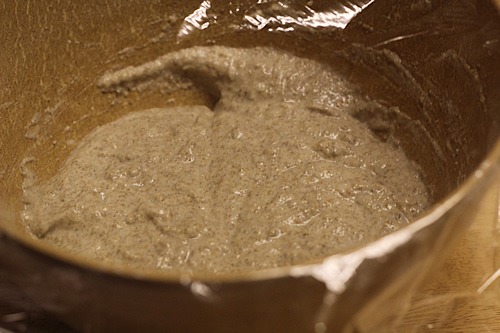
Days 3, 4, 5, and 6: Perform 2 Feedings @ 12 hour intervals
- Take 3.2 oz of the initial mix (one-third of above)
Mix it with
- 3.2 oz (3/8 cup) of filtered or Spring water to break it up. I use filtered water because tap water has chlorine in it. If you don’t have filtered or Spring water, you may use tap water. Just leave it out overnight, before using, to remove the chlorine.
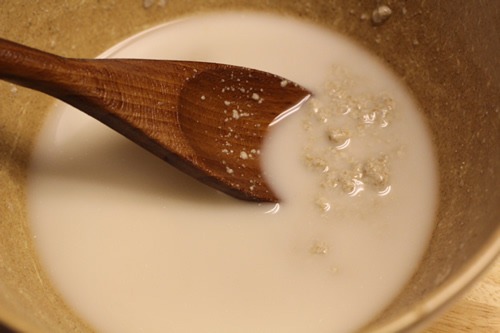
To the water/starter mixture, add
- 3.2 oz (7/8 cup) whole rye flour
Mix until it forms a smooth paste, cover it with plastic wrap or bees wrap, and let it stand in a warm place (75 to 80 degrees F.) for 12 hours.
Repeat the feedings every 12 hours (2 times per day) for 4 days (Days 3-6).
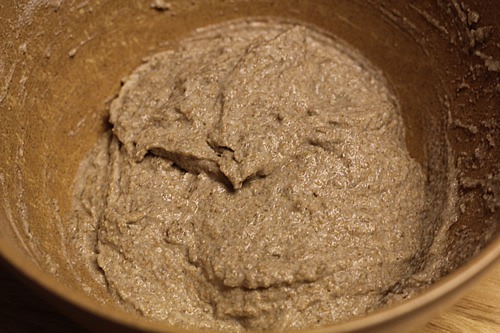
Days 7 – 10: Continue feeding your sourdough to develop a mature flavor
The culture can be used to make bread on the 7th day, but it will develop better flavor and strength if you continue the feedings for a few more days.
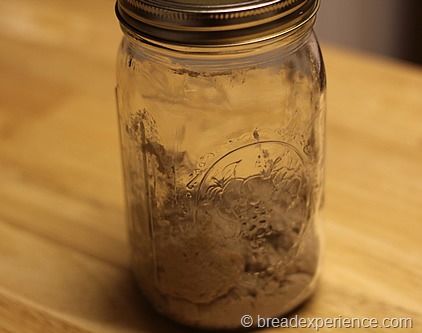
Now take your sourdough rye starter and make some bread.
If you’re looking for breads made with rye, go here https://www.breadexperience.com/rye-bread-recipes and/or type in “rye” in the search bar at the top.
Happy Baking!
Cathy
Anonymous says
Hi, I am a little confused with this method. For every feeding you state that you remove 3.2 ounces or a third of the previous batch. What happens with the other 2/3? Do you throw them out? and if so, why? It seems kind of wasteful. Thank you!
Cathy (breadexperience) says
Hi, thanks for visiting the Bread Experience. You need to discard the other 2/3 so that the starter is workable. While you are developing the starter, you’ll add flour and water in the same amount as the culture. Since you feed it for several days, you would end up with an unmanageable amount of starter if you didn’t discard any. This might seem wasteful, but you want to make sure that the starter gets off to a vigorous start.
You might also want to check out this alternative method for creating a rye sourdough culture: https://www.breadexperience.com/seeded-rye-loaf/
Happy Baking!
Cathy
Anonymous says
this is kind of confusing and not clear at all. It would be much easier if you kept the 2 techniques separate. I really just want to make a starter from scratch.
Cathy W. says
Hello Anonymous, perhaps you might want to use a different method for developing a rye starter. Here is the link: https://www.breadexperience.com/seeded-rye-loaf/
Rye lover says
I am *way* late with this comment, but I finally succeeded making a rye sourdough starter after failing many times with the method described here. I was drawn to this website because of the Ruis recipe, which worked well for me, and I’ve made several other recipes from your site–it’s otherwise great! the rye sourdough recipe is the only one that didn’t work for me. Anyway, here’s what I did: I mixed equal amounts rye flour and water, by weight (100 g to start), in a glass container, and covered it with cheesecloth. It was a hard paste after mixing, but the next day it loosened up. I added 25g each water and flour and covered it with cheesecloth again, and put it in a warm place. I repeated this process, feeding the starter equal amounts water and rye flour, for 9 days. By the end, it smelled fruity and a bit like alcohol, and was a noticeably different color, more pink than the fresh rye/water mix. I think the main part of the instructions above that weren’t working for me is the advice to cover the starter with plastic. I got better results with air. Anyway, hope that helps anyone struggling with the recipe above.
Cathy says
Hi Rye Lover,
Thanks for sharing your experience creating a rye sourdough starter. I’m glad using the cheesecloth worked for you.
Happy Rye Baking!
Cathy